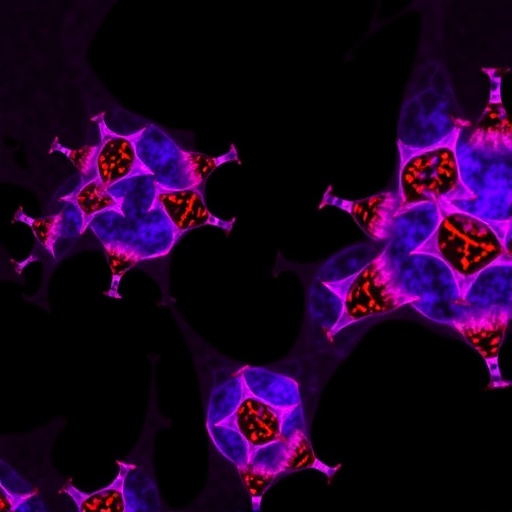
Credit: Linköping University
Despite physical distance, it’s possible to create proximity between family members located in different places. This is according to a study from Linköping University that has investigated how video calls bring family members together. The results show that proximity in video calls is established mainly by way of the body and the senses, e.g. by giving a digital high five.
Touching a beloved family member, or even making eye contact, is impossible online. Still, it’s possible to feel close to them. Anna Martín Bylund and Linnéa Stenliden have studied the social and emotional challenges that geographical distance can create among family members who are spread out in different countries, and how longing is expressed in video calls. Their study has been published in the Journal of Multilingual and Multicultural Development.
“Our study shows that in a video call, an interaction can develop where the participants feel proximity. This interaction is enacted by way of the body and the senses, as well as other means like the camera and the technology. This research has become extra relevant in these corona times, when many of us are forced to communicate digitally”, says Anna Martín Bylund, senior lecturer at Linköping University’s Department of Behavioural Sciences and Learning.
The researchers have studied how three multilingual families who have moved to China communicate with their relatives in Europe. The researchers have analysed the family members’ verbal and physical interaction in four online video calls. They see how the physical distance and the digital interface present various challenges, but that proximity is still established, in creative and to a degree innovative ways. The researchers have used recordings of the video calls from the participants’ own mobile phones or computers, as well as from cameras installed in the rooms where the participants were located. With these separate cameras, the participants could be captured when they were not in view in the video calls.
Humour, creativity and memories create proximity
Previous research in the field has discussed whether it is possible to create proximity and togetherness digitally. It has shown that changing communication patterns affect how we move our bodies as well as how we move ourselves across national boundaries. In this study, the LiU researchers show that proximity is not a given, but that it can, to a degree, be re-created and modified by way of video calls. The study also shows that proximity is created primarily using the body and the senses, although spoken language also plays a part. In video calls, the room is very important – what appears on screen and how the body is coordinated in relation to the camera lens. In the study one can see that this suits small children without a well-developed language. Their participation is facilitated when body and space can be more important than speech.
One factor that can help build emotional proximity is humour. The camera’s presence contributes to this, for instance by zooming in on different parts of the body and excluding others, leading to jokes and laughter. But proximity is also created through the participants’ ability to be creative and to handle the situations that arise between themselves, the person or people they are speaking to, and the technology. An example of this is the high-five that a three-year-old in China and her grandparents give each other. But instead of one palm contacting another, the experience is replaced by skin against visual impressions, speech, and the muscle memory of a high-five. This practice produces a high-five despite everything, and togetherness between the participants.
In the conversations between the children and their relatives, memories are also evoked, which they can relate to together. In one conversation, a grandmother mentions a bag that she has given to her granddaughter, which affects the girl so much that she runs out from the conversation to get it. After the conversation is over, the girl keeps her grandmother both in her memory and in her body by holding onto the bag.
“Our study contributes insights into how technological solutions are used for everyday communication, in order to overcome distance in families with roots in different countries. The families’ communication is affected by the technology, which creates specific conditions for how proximity can arise”, says Linnéa Stenliden, senior lecturer at Linköping University’s Department of Behavioural Sciences and Learning
Closer to far away; transcending the spatial in transnational families’ online video calling is a small, qualitative study, and further research is required.
The researchers are taking the results from the study into their new project. Here they will investigate new challenges such as uncomfortable silence, which upper secondary teachers are faced with when using distance education in the age of the coronavirus.
###
Closer to far away: transcending the spatial in transnational families’ online video calling (2020), Anna Martín-Bylund & Linnéa Stenliden, Journal of Multilingual and Multicultural Development
https:/
Media Contact
Anna Martín-Bylund
[email protected]
Original Source
https:/
Related Journal Article
http://dx.





